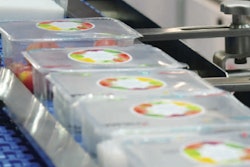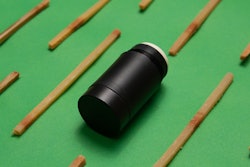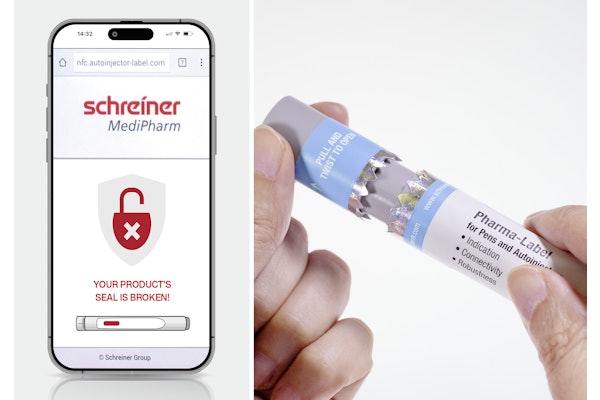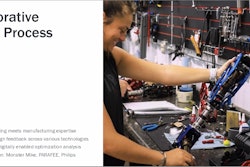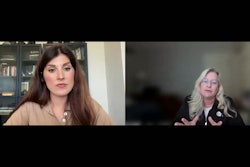
This content was written and submitted by the supplier. It has only been modified to comply with this publication’s space and style.
Harpak-ULMA’s new suite of services enables marketing and packaging engineering teams to now access a combination of conceptual design, prototypes, and implementation guidance from a single source— the $1B industry leader in complete packaging line solutions. As a result, marketers and engineers can more readily visualize and evaluate multiple designs by easily producing high-quality, photo-realistic 2D/3D renderings complete with branding and graphics, as well as the rapid iteration of cost-effective prototypes.
Employing Harpak-ULMA’s new agile-based approach enables producer teams to compete more effectively by streamlining the delivery of tangible, realistic, production-ready concepts to their customers. The service means marketing and packaging engineering teams can now access a combination of conceptual design, prototypes, and implementation guidance from a single source. Harpak-ULMA promises to help marketers and engineers more easily visualize and evaluate multiple designs by easily producing high-quality, photo-realistic 2D/3D renderings complete with branding and graphics, as well as the rapid iteration of cost-effective prototypes. Employing an agile-based approach enables producer teams to compete more effectively by making it easier to put tangible, realistic, production-ready concepts in their customers’ hands.
Traditional package design initiatives can include any combination of in-house or outsourced design, prototyping, and packaging OEM organizations. This typically is executed as a waterfall development process that essentially silos each phase, often with multiple supporting companies or teams. Such an approach to developing new packaging may not only take longer but result in a final approved design that doesn’t sufficiently account for production limitations. If a marketing team, design firm, or engineering team does not recognize and incorporate underlying machine constraints in the design phase, an approved concept may face significant production challenges. In fact, settling on a design prior to seeking operational input opens the door to potentially expensive errors. That can include package or material characteristics that aren’t reflective of the original design intent, or worse – implementation delays, redesigns, or additional costly equipment configurations.
Carlo Bergonzi, Harpak-ULMA’s Product Manager for Tray Seal, explains, “A common facet that we see design teams overlook is the effect of packaging geometry on tray rigidity and feel, as well as consistent material thickness. For example, a custom multi-cavity tray design can result in as much as a 50% reduction in material gauge between the tray flange and floor. We’d recommend some changes in package geometry to alleviate this kind of production issue. Unfortunately, if the design team is not aware of material deformation induced by a tray production process, this may not be evident until after the cost of a developing a prototype has been incurred.
“We also see companies limit their prototype options and stick with standard tray designs due to the expense associated with asking their standard tray vendor to produce a custom mold. This can easily run into low-to-mid six-digit figures. Our Mondini Platformer line enables producers to create custom trays with a one-year payback on that investment,” Carlo added.
Dave Favret, Harpak-ULMA TFS Product Manager, cites another example, “We’ve also seen unique package designs from marketing teams which unfortunately require a specific thermoforming sealing process that’s incompatible with required throughput rates.”
In both scenarios, an understanding of pragmatic material and production constraints in the design phase makes it far easier to drive incremental design change without sacrificing the original marketing intent.
The package design consulting service introduced by Harpak-ULMA utilizes agile development concepts. Enabling a more collaborative process between production engineering and marketing during the design phase is the key to optimizing prototyping and implementation time and cost while encouraging design innovation. Harpak-ULMA’s iterative design process utilizes deep knowledge of equipment capabilities and digital prototyping techniques (CAD and 3D Printing) to enable rapid evaluations of functionally pragmatic packaging design features and even graphic-intensive printing options.
“Historically, we’ve often helped customers bring a new design into production, including assisting them in the ideation process. We’ve always been able to work with CAD and CNC new molds for prototype production, and we have multiple pieces of equipment to produce samples. Adding 3D printing to that mix accelerates that process and offers some interesting customer alternatives for back-up molds in a pinch,” said Favret. “Over the last 40 years, we’ve developed the knowledge, resources, and tools to address the entire packaging development cycle.”
Kevin Roach, Harpak-ULMA’s CEO, expressed confidence that customers would perceive substantial value in the new service. “Formalizing our capabilities into a one-stop service offering designed to help producers bring new concepts to market faster, at less cost, is consistent with our emphasis on driving innovation in this market space,” said Roach. “While producers have options available to them already, we believe we are uniquely suited to help them incorporate functional design aspects upfront while avoiding the time and expense of innovative concepts incompatible with production capabilities or expectations.
“Combining our operational experience with advanced design tools allows us to present detailed, photo-realistic renderings of retail-ready presentations based on actual production parameters. We can even execute shipment and shelf-life testing using production-quality prototypes. Producer marketing teams value the ability to quickly visualize new packaging renderings and real package samples because it helps them win more business. Our service offers them an alternative to more traditional approaches for introducing new packaging –not only making the ideation process more tangible but decreasing NPI risk by avoiding costly design mistakes early on,” Roach said.






